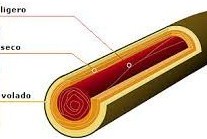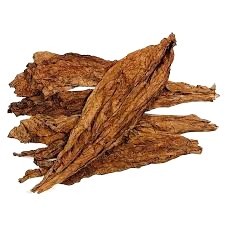In a break from Deer Stalking Rupert Mackintosh gets technical and looks at what leaves make up a Cigar.

Today we are going to start getting technical – and I mean really technical – and look at what actually makes a cigar. “The leaf, the leaves!” I hear you cry, and you would be right. But did you know there are actually five different roles that tobacco leaves will play in your premium Cuban cigar?
Each are specially grown for their specific purpose (and we will look at the growth of these plants another day). They are considered three for flavour, one for structure, one for the eye.
Three for flavour – these leaves are blended together to form the filler (or tripa as it is known in Cuba). It is the filler that, when lit, gives of the distinctive flavour of the cigar and holds the key to its individual taste and smell. These three leaves, being picked and squeezed tightly together by hand, are very region specific and indeed even specific how high up the plant they can be picked. Rather like French vineyards being across a road from each other but tasting differently, this is where the magic of the different brands comes in.
 Volados are lightly coloured and burn the most easily. They are known as Fortaleza 1 (strength 1) and are thus the mildest.
Volados are lightly coloured and burn the most easily. They are known as Fortaleza 1 (strength 1) and are thus the mildest.
Seco are medium in flavour and provide most of the aroma for the smoke. They are known as Fortaleza 2 (strength 2).
Ligero are fuller in flavour, burn the slowest and add some real strength to the smoke and flavour. They are known as Fortaleza 3 (strength 3).
Have a think about your favourite blend. If it’s a medium to full blend, like a Cohiba, chances are your roller will have included more Ligero than Volados in the rolling. What do you think?
 One for structure – the binder is also known as the Capote and is the leaf that keeps the three filler leaves bound tightly together. This is like the scaffolding that keeps the structure together, but isn’t that pretty on the eye. So we still need…
One for structure – the binder is also known as the Capote and is the leaf that keeps the three filler leaves bound tightly together. This is like the scaffolding that keeps the structure together, but isn’t that pretty on the eye. So we still need…
One for the Eye – lastly, a wrapper (or capa) is added. This is the thinnest leaf of them all, but also the most supple, as it’s rolled around the outside of the others like a smart jacket and keeps everything together. These are grown in the shade (whereas the others are all grown in the sun) to help keep them pretty. Interestingly, the wrapper adds next to nothing to the flavour of the cigar itself, but accounts for everything in terms of presentation. Look at a premium brand label and you can see the veins on the wrapper and maybe a few sunspots. Fantastic!
To read Ruperts previous article on Cigars follow this link: how-to-rescue-a-cigars



















